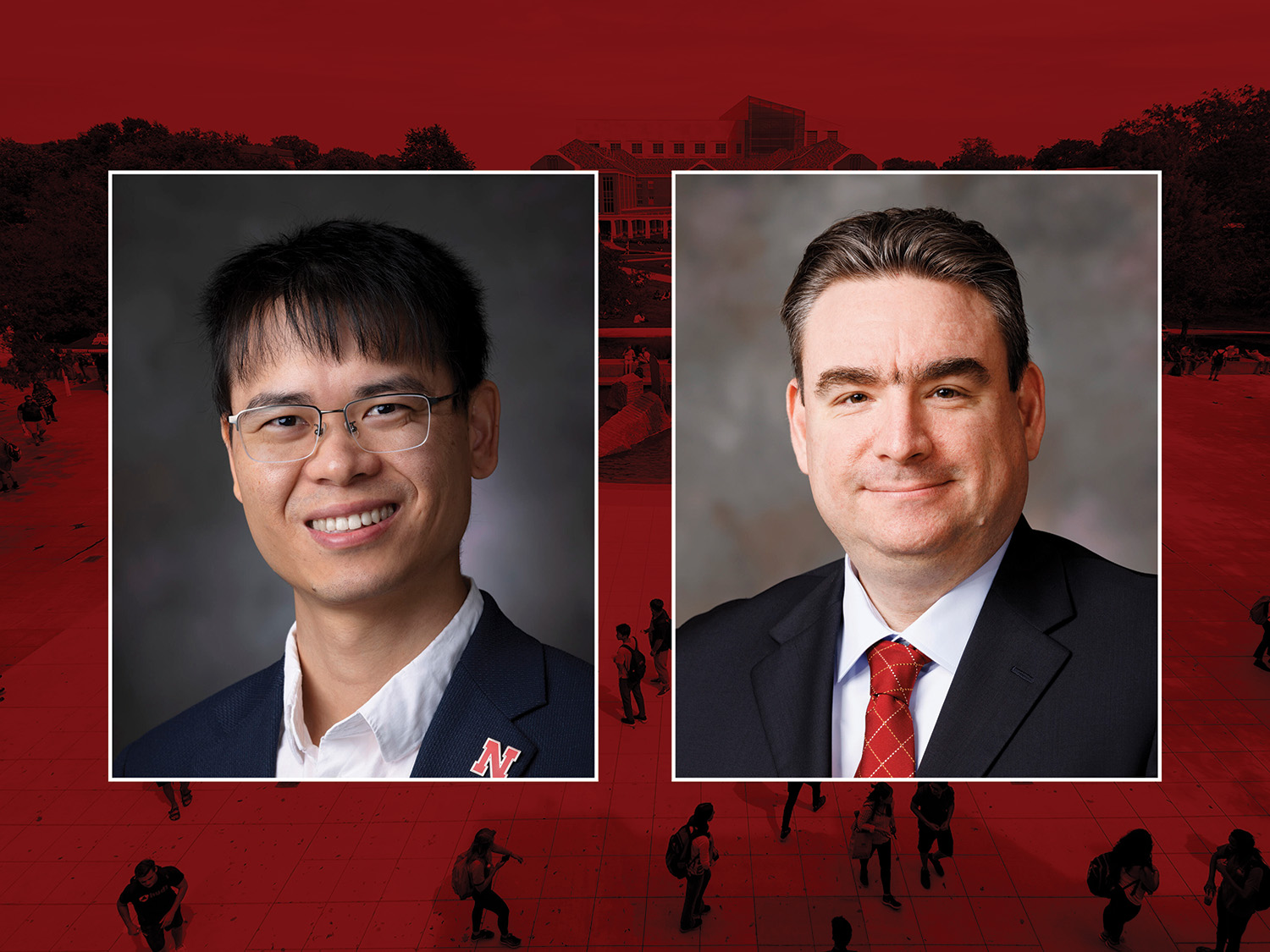Jan 24, 2024
By Victoria Grdina

The University of Nebraska–Lincoln will be getting its own 5G network in 2024.
With support from the National Science Foundation, a team of Nebraska researchers has begun work on “Husker-Net,” which will offer additional connectivity and support to other university researchers both on and off campus.
School of Computing assistant professor Qiang Liu will lead the project alongside fellow computing professor Mehmet Can Vuran and Information Technology Services Director of Research IT Services Toolika Ghose. In collaboration with ITS and other researchers across the university community, the team aims to develop what will be the first private 5G network in the state, and one of the only private 5G university research networks in the country.
“The idea is to fill some gaps between what the university can provide in terms of the infrastructure and the needs of faculty so that we can provide wireless connectivity and edge computing capabilities to all our different faculty projects,” Liu said.
From agriculture to autonomous vehicles to the Internet of Things, the university's diverse research activities span various locations across the state and often take researchers to rural areas where, unfortunately, wireless connectivity is often not available, affordable, or reliable. The Husker-Net team aims to remedy those issues with an end-to-end cellular edge network solution that would feature a low operating cost, open-source modules, flexible deployment, and automated management capabilities.
Husker-Net will expand on the Nebraska Experimental Testbed of Things (NEXTT), Nebraska’s largest experimental wireless infrastructure. The School of Computing’s Cyber-Physical Networking Lab, led by Vuran, operates NEXTT on seven sites over a 300-hectare area in Lincoln and the Eastern Nebraska Research, Education, and Extension Center (ENREEC).
“NEXTT plays an important role in the mission of the School of Computing by providing unique learning opportunities for our undergraduate and graduate students by moving wireless education from desktops to rooftops,” Vuran said. “Husker-Net will build on the established site design, implementation approaches, and several years of success of NEXTT.”
With assistance and equipment supplied by Toyota, Nokia, and Baicells, the team will construct four base location sites on the university’s City Campus, East Campus, Innovation Campus, and research farm located approximately 30 miles outside the city of Lincoln. The team will also create one mobile site to support researchers travelling to remote areas.
Liu said reliable connectivity is essential for researchers out in the field who need to collect and transmit data in real-time, use technology tools such as applications or sensors, or avoid time-consuming travel to perform tasks that could otherwise be automated or performed remotely.
“We have a big agriculture college, and they have a lot of experiment farms, but they barely have outdoor connectivity,” Liu said. “When we have the tools deployed outside with a real network in a real scenario, it will boost our research and bridge the gap between that research and reality.”
ITS will be heavily involved with Husker-Net during the development and deployment process. Once the network infrastructure is established, Husker-Net would be monitored and managed by ITS team members who will evaluate project risks, onboard new faculty, and maintain security.
"I'm working very closely with the security team and other teams within ITS, like the network team, to make sure that the infrastructure is aligned with the security requirements and policies,” Ghose said. “Then we are able to help researchers understand how they can use this network and facilitate all that within ITS.”
University faculty will be able to join the network by simply submitting a request through the Husker-Net website, which will be managed by ITS. The request and accompanying project will be reviewed by members of the Husker-Net and ITS teams. Once a project is approved, faculty will be issued a SIM card and granted network access.
"What I like about this project is how we can expand network connectivity access and make it easier for the researchers to conduct their research,” Ghose said. “They can focus on their research and don't have to worry about getting the connectivity set up for themselves in remote locations where we don't have it.”
To start, ITS will onboard and support 10 faculty projects from the College of Engineering, College of Architecture, Institute of Agriculture and Natural Resources, and Midwest Roadside Safety Facility. One of those projects belongs to Yijie Xiong, assistant professor of animal science and biological systems engineering. Her research focuses particularly on using technology to study animals and improve farming practices, and much of it is conducted in rural areas with extremely low or no connectivity.
“Researchers from different disciplines have urgent needs in distributing sensor networks, developing UAV-based remote sensing, and aerial applications in precision crop and livestock management,” Xiong said. “Husker-Net will enable researchers in these disciplines to address the data access and processing bottleneck caused by the lack of rural connectivity across different research stations. We foresee it will significantly alleviate the labor needs in data collection and accelerate data processing and analysis in our current and future research projects.”
In the future, the Husker-Net team plans to continue exploring more projects with the Office of Research and Economic Development and other sectors of the university community, such as graduate and undergraduate students, the facilities and athletics departments, and campus police. Liu also hopes to eventually expand Husker-Net beyond the university and make it available at an affordable cost to others, like the farmers who work with Xiong.
“Our goal is to make a high impact by reshaping the future of private 5G network solutions so they will be affordable. We want to try to become a hub and a key site in the Midwest to invest in the private 5G network for agriculture and rural connectivity,” Liu said. “We’re providing very unique features and attributes with this private network, and it will be a good example for others to follow.”
University researchers who are interested in connecting to Husker-Net can visit and submit requests later this spring at husker-net.unl.edu.